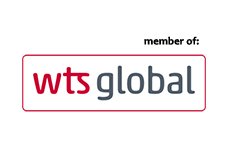Comparative analysis of Indonesia’s new Transfer Pricing guidelines against Singapore’s Transfer Pricing guidelines
Indonesia’s new transfer pricing (“TP”) guidelines are enshrined in the Minister of Finance Regulation 172/2023 (“MoFR-172”), which was announced on the 29th of December 2023. MoFR-172 revokes previous MoFR guidance (MoFR-22, MoFR-49 and MoFR-213), all of which have been streamlined and restated in MoFR-172. There are changes to how the TP process, the Mutual Agreement Procedure (“MAP”) and the Advance Pricing Arrangements (“APA”) are implemented in Indonesia, with the aim of enhancing clarity and fairness in business transactions.
This alert reviews the updated, consolidated TP guidelines for Indonesia and compares the guidelines to the Singapore TP guidelines – with reference to the IRAS TP Guidelines (Sixth Edition). The definition of related parties, application of the arm’s length principle, TP documentation requirements, compliance assessments, corresponding adjustments, mutual agreement procedures (“MAPs”) and Advance Pricing Agreements (“APAs”) in the guidelines, will be compared.
Indonesia’s new transfer pricing (“TP”) guidelines are enshrined in the Minister of Finance Regulation 172/2023 (“MoFR-172”), which was announced on the 29th of December 2023. MoFR-172 revokes previous MoFR guidance (MoFR-22, MoFR-49 and MoFR-213), all of which have been streamlined and restated in MoFR-172. There are changes to how the TP process, the Mutual Agreement Procedure (“MAP”) and the Advance Pricing Arrangements (“APA”) are implemented in Indonesia, with the aim of enhancing clarity and fairness in business transactions.
This alert reviews the updated, consolidated TP guidelines for Indonesia and compares the guidelines to the Singapore TP guidelines – with reference to the IRAS TP Guidelines (Sixth Edition). The definition of related parties, application of the arm’s length principle, TP documentation requirements, compliance assessments, corresponding adjustments, mutual agreement procedures (“MAPs”) and Advance Pricing Agreements (“APAs”) in the guidelines, will be compared.
Indonesia’s new TP guidelines (MoFR-172)
In MoFR-172, the MOF provides a single, consolidated source of guidance for TP matters, including related party definition, application of the arm’s length principle, TP documentation obligations, compliance assessment, corresponding adjustments, MAPs and APAs. In doing so, the regulation repeals several previous regulations and aligns with the Harmonisation of Tax Regulations Law in Indonesia.
Definition of Related Parties
The MoFR-172 guidance clarifies that a special or related party relationship exists where ownership, control and family relations between parties and individuals results specifically in control of one or more parties over the other, or where one or more parties is not independent.
Further, control is deemed to exist through:
- direct or indirect control of a party by another, or common control of two or more parties;
- control of a party through management or use of technology, or through direct or indirect participation in management or operational decision-making by an individual;
- commercial or financial knowledge or business group affiliation by parties; or
- self-declaration of a special relationship by a party or parties.
With the clarifications, taxpayers are cautioned to apply rigour in assessing whether special relationships exist, as well as properly documenting the outcomes for defence purposes.
By comparison, under the Singapore TP guidelines, related parties are more narrowly defined as where a person directly or indirectly controls another person, or both persons are directly or indirectly controlled by another person. As a result of the different definitions, a potential risk may arise where Indonesia claims that a special relationship exists, based on control through technology use, business affiliation or self-declaration.
Arm’s Length Principle
Under MoFR-172, the MOF introduces new related party transaction (“RPT”) disclosure requirements, including:
- Increased scope and depth of ex-ante RPT analyses for service, now all financial, asset transfer, business restructuring and cost contribution transactions – including increased guidance on the proof of arm’s length pricing for these transactions. Proof includes valuation of licensed intangible property and proof that services are provided, benefit the recipient and services are not shareholder services;
- Selection of the most appropriate TP method for arm’s length analysis, including the bias for Comparable Uncontrolled Price (”CUP”) or Comparable Uncontrolled Transaction (“CUT”) methods and application of the Profit Split Method for unique and valuable contribution transactions; and
- Determination of the arm’s length principle (“ALP”), whether a point or range, based on a single year or multiple year comparable data (the latter only if comparability is increased), and the preference for comparables from the jurisdiction of the tested party.
With the updated requirements as outlined, compliance is more complex, there is an increased burden of proof for taxpayers, and increased compliance costs, through:
- Indonesia requiring both ex-ante and ex-post analyses on an increased transaction scope;
- a requirement to justify the basis for selection of an arm’s length range (over a point), without guidance on how to meet the burden of proof;
- a requirement to pass transaction existence and benefit tests, before the ALP application;
- clarification of use of the three additional TP methods, (including valuations), without clear guidance on application of the methods, first introduced in MoF 22/2020; and
- the limited TP documentation preparation period for taxpayers at year end, when their focus is finalising financial audits for tax filing.
Singapore adopts a less complex, but more business-friendly TP compliance framework, that may ultimately be lower cost, based on:
- ex-post pricing analyses of RPTs;
- selection of the most appropriate TP method based on the five OECD TP methods (with guidance on their application);
- support for use of arm’s length ranges and accept taxpayer service analyses; and
- 10-11 months to prepare TP documentation,
TP Documentation
TP documentation requirements are largely unchanged under MoFR-172, although updates in the preparation, submission and penalties exist in respect of Country-by-Country Reports (“CbCR”) and TP Documentation.
For CbCRs, the regulation clarified that for domestic taxpayers, a CbCR is required if the taxpayer is a parent entity of a business group (based on ownership and not control), whose consolidated gross turnover is at least IDR 11T in the prior Fiscal Year (“FY”). The regulation includes the updated formula for calculation of gross turnover for CbCR scope determination.
Regarding TP documentation (Local and Master Files), the regulation clarified that taxpayers have one month to submit the documentation, on request. Failure to comply will attract penalties.
This update aligns the Indonesian CbCR requirements in with Singapore legislation, which applies to Singapore tax residents who are Ultimate Parent Companies of a Singapore MNE Group and who have consolidated group revenues of S$1,125M in the prior FY. Further, taxpayers in Singapore are required to submit their TP documentation to IRAS within 30 days upon request.
Compliance Assessment
MoFR-172 confirms that the mechanism to verify compliance with the ALP is the assessment of related party disclosures and TP documentation for their fulfilment, application of the ALP and timely preparation. Non-compliance with the ALP will result in an adjustment to the arm’s length price by the Directorate General of Taxes (“DGT”).
An adjustment, whether for domestic or cross-border related party transactions, will be deemed a dividend, subject to tax – unless the taxpayer either makes a self-adjustment prior to a DGT assessment or agrees with the DGT adjustment. Taxpayers can apply tax treaty relief.
Further, if the adjustment results in a higher selling price of goods or services, the DGT can adjust the VAT tax base and apply the TP adjustments to each goods or service transaction – although such adjustments will not include credits to the input VAT of buyers.
We anticipate that the increased range of adjustments announced, will likely increase the compliance burden for taxpayers in Indonesia.
In Singapore, IRAS may similarly conduct transfer pricing audits of TP and supporting documentation to assess taxpayer compliance with the ALP – and to adjust the transaction pricing, where not at arm’s length. IRAS may impose surcharges and penalties for non-compliance with TP requirements, including timely preparation and/or submission of TP documentation, arm’s length pricing or providing misleading information. A difference is that Singapore requires GST adjustments up or down, where the price changes are accounted for in taxpayer financial statements, or the TP adjustment is taxable or allowable for income tax purposes.
Secondary Adjustments
DGT’s adjustment on TP, being a primary adjustment in the calculation of taxable income, may lead to a secondary adjustment in the form of “constructive dividend”.
A constructive dividend on cross-border RPT is subject to withholding tax assessment at 20% or a reduced rate as per the DTA. However, a constructive dividend from domestic RPT is generally exempt from withholding tax.
The DGT shall forgo such secondary adjustment if: (i) there is repayment of cash or cash equivalent at the amount of TP-induced adjustment or (ii) taxpayer agree with TP adjustment.
Corresponding Adjustments
The MoFR 172 regulations clarified that for TP adjustments imposed by the DGT or counterparty Treaty Partner’s tax authority that result in double taxation:
- Where imposed on a foreign tax party in cross-border transactions, the local counterparty may carry out a corresponding adjustment. Corresponding adjustment is carried out through MAP; and
- Where imposed between domestic taxpayers, a corresponding adjustment may be requested, if the adjusted party agrees with the TP adjustment and does not file any legal action.
In Singapore, when a TP adjustment by a foreign tax authority results in double taxation for a Singapore taxpayer, the taxpayer may seek relief through a corresponding adjustment. The IRAS will only consider making corresponding adjustments where an Avoidance of Double Tax Agreement (“DTA”) exists between Singapore and the counterparty jurisdiction, and the Singapore taxpayer has applied for a MAP under the DTA.
MAP
The MoFR 172 regulations provide further detail of the administrative procedures for MAPs, introduced in PMK-49 (issued in 2019). The regulation provides for lawsuit and Judicial Reviews to be simultaneously carried out with a MAP process (the latter being terminated in the event of a lawsuit or JR decision and the appeal/JR decision adopted).
In other updates, refunds of tax overpayment are not postponed by MAP requests; the DGT will issue notifications of MAP agreements, the DGT will stop MAP proceedings where taxpayers fail to submit requested documents; and importantly, if a remedy under a MAP proceeding is issued after the domestic remedy is decided, the tax payable under the MAP must be recalculated according to the domestic remedy decision.
In Singapore, taxpayers may initiate a MAP within the DTA-specified time limit, following a well-documented process (including a pre-filing meeting, MAP application submission and provision of data to enable IRAS to liaise with the foreign competent authority to resolve the dispute. Taxpayers can request MAP assistance or domestic judicial remedies, or both. Where an issue has been decided via judicial remedies, while a taxpayer can request MAP assistance, IRAS is unlikely to make adjustments that will be at odds with judicial remedies.
APA
The MoFR 172 regulations provide further detail of the administrative procedures for APAs, introduced in PMK-22 (issued in 2020). Under the regulations, the administrative conditions for eligibility for an APA application were further restricted, and taxpayers in the preliminary evidence examination stage of a tax crime investigation, taxation criminal proceedings or serving a criminal sentence are prohibited from APA requests. Where a taxpayer submits an APA request but becomes involved in legal processes during the negotiation phase, the DGT is authorised to halt the APA process.
Other changes include clarifying that multilateral APAs are possible, streamlining APA processes for taxpayers seeking international agreements, allowing unilateral APAs to be requested after withdrawal from bilateral or multilateral proceedings, extending the APA renewal request period, and exempting penalties applicable to rollback period while negotiating an APA.
The new conditions further restrict the eligibility of taxpayers to apply for APAs, but may attract taxpayers based on new features such as streamlined processes. Certain features of the APA program that impact its effectiveness (for example, if the outcome of a Bilateral APA is to reduce the taxable revenues of a subsidiary of a foreign MNE, then the APA will not be allowed).
In Singapore, taxpayers may initiate unilateral, bilateral, or multilateral APAs, following a well-documented APA program, with considerable guidance available. Eligible taxpayers. The IRAS provides indicative timeframes for each step and taxpayers will be advised if their APA request will be accepted, within 6 months of requesting the APA.
Concluding Thoughts
The introduction of MoFR-172 has provided clarity in related party definitions and arm’s length price determination, and MAP and APA programs.
However, the confirmation of the three additional TP methods (CUT, Asset valuation and Business Valuation), without application guidance; the increased scope of ex-Ante analyses to price RPT; and the additional requirements for taxpayers to justify their arm’s length range and services charges, serves to increasingly shift the burden of proof to taxpayers. These new conditions add complexity and potential uncertainty to the compliance process, increasing the cost of compliance.
The additional data points requested may provide additional areas for challenge and the top-of-mind question for taxpayers must be: how do I defend my TP position?
Your Contacts
Christine Schwarzl
Associate Principal (Taxise Asia)
WTS Asia Pacific Transfer Pricing Service Leader
T +65 6304 5390
christine.schwarzl@TaxiseAsia.com
Tomy Harsono
Partner (Consulthink)
T +62 811 9196 939
Tomy.harsono@consulthink.co.id



info@TaxiseAsia.com
www.TaxiseAsia.com
![]() Taxise Asia LLC
Taxise Asia LLC
+65 63047972
info@consulthink.co.id
www.consulthink.co.id
![]() consulthink
consulthink
+62 21 506 789 68




